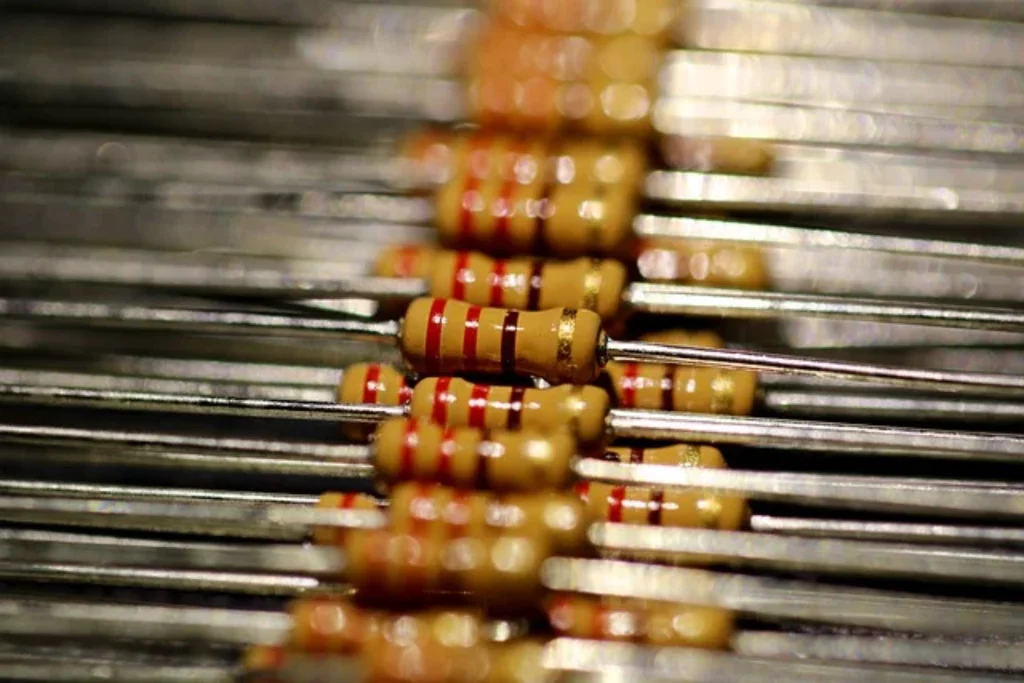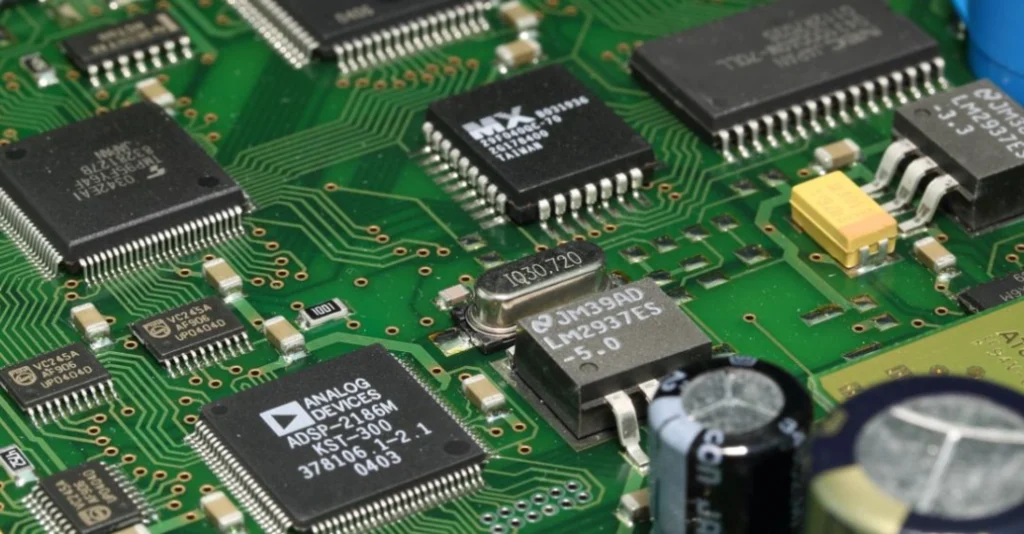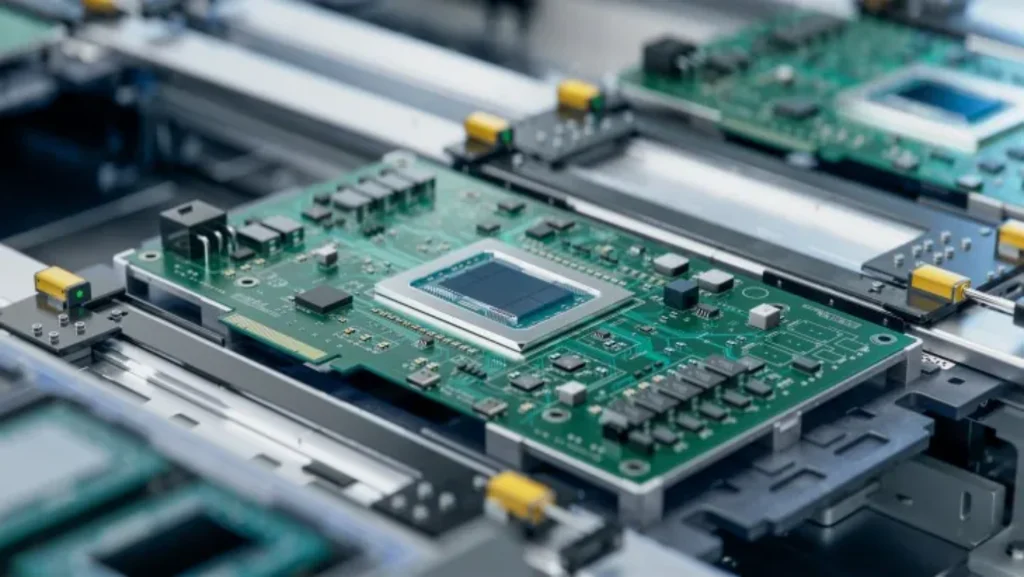Encapsulated Ceramic Electronic Components – High-Quality Ceramic & Protection
Section 1 Introduction
In today’s technologically advanced world, the demand for reliable and robust electronic components is continually growing. Encapsulated ceramic electronic components have emerged as a leading solution for applications requiring high performance, durability, and protection against harsh environments. These components leverage the exceptional properties of ceramic materials to provide superior electrical, thermal, and mechanical characteristics while safeguarding sensitive electronic elements. This article will explore the various types of encapsulated ceramic electronic components, their processing technologies, applications, and material properties. Furthermore, we will showcase why Welleshaft is a trusted global supplier and contract manufacturer in this critical field.
Section 2 Understanding Encapsulated Ceramic Electronic Components
Encapsulated electronic ceramic parts are individual electronic components that are encased within a protective ceramic material. This process of encapsulation is crucial as it safeguards delicate electronic elements from potentially harmful external factors such as moisture, dust, physical impacts, and electrical interference. The ceramic material used in encapsulation is selected for its inherent properties, including exceptional electrical insulation, superior thermal stability, and resistance to chemical corrosion. This makes it ideal for protecting sensitive electronic components in various operating environments.
These parts range from basic resistors and capacitors to more complex components like thermistors, varistors, and sensors. Each part is encapsulated to enhance its longevity and reliability. They are fundamental building blocks for various electronic devices and systems.
Section 3 Types of Encapsulated Ceramic Electronic Components
The field of encapsulated ceramic components is diverse, with several types designed for varying purposes:
3.1 Passive Components:
3.1.1 Resistors: High-precision, high-stability resistors used in various circuits.
3.1.2 Capacitors: Used for energy storage and filtering, available in different capacitance values.
3.1.3 Inductors: Used in filtering and impedance matching, available in various inductance values.
3.2 Active Components:
3.2.1 Diodes: Semiconductor devices used for rectification, switching, and voltage regulation.
3.2.2 Transistors: Used as electronic switches and amplifiers, available in various configurations.
3.2.3 Integrated Circuits (ICs): Complex circuits integrated on a single chip, used in logic and signal processing.
3.3 Sensors:
3.3.1 Pressure Sensors: For measuring pressure in various environments.
3.3.2 Temperature Sensors: For accurate temperature measurement in various applications.
3.3.3 Gas Sensors: For detecting the presence of specific gases.
3.3.4 Humidity Sensors: For detecting moisture levels in various environments.
3.4 RF Components:
3.4.1 Antennas: Used for wireless communication and data transmission.
3.4.2 Filters: Used to filter unwanted frequencies in RF applications.
3.4.3 Amplifiers: Used to boost signal strength in various applications.
3.5 Sub-Assemblies and Modules:
Complex functional units made of multiple components housed within a single ceramic package.
3.6 SMD (Surface Mount Devices):
Components designed for surface mounting on circuit boards for automated assembly.
3.7 Hermetically Sealed Components:
Specifically sealed to prevent moisture or gas penetration, ensuring maximum reliability in harsh conditions.
Section 4 The Significance of High-Quality Ceramic Materials
The benefits of ceramic encapsulation are numerous and contribute significantly to the reliability and performance of electronic components:
4.1 Superior Thermal Stability: Ceramics offer high resistance to thermal stress, allowing components to operate efficiently at high temperatures.
4.2 Excellent Chemical Resistance: Resistant to corrosive substances and solvents, ceramics provide a durable barrier against harsh chemicals.
4.3 Exceptional Electrical Insulation: Ceramics provide superior electrical insulation, reducing the risk of shorts and maintaining signal integrity.
4.4 High Mechanical Strength: Withstand significant mechanical stress and vibrations, ensuring device integrity.
4.5 Long Lifespan: Encapsulation protects components from environmental wear, extending their useful life.
4.6 Hermetic Sealing: Certain ceramic encapsulation methods achieve a hermetic seal, completely protecting components from moisture.
4.7 Biocompatibility: Some ceramic materials are biocompatible and ideal for medical applications.
4.8 Compact Designs: Facilitates miniaturization and more efficient board layouts.
4.9 Stable Performance: Encapsulated components offer consistent electrical performance over long periods.

Section 5 The Benefits of Encapsulated Electronic Ceramic Parts
Encapsulated electronic ceramic parts offer several benefits compared to their non-encapsulated counterparts:
5.1 Enhanced Durability and Longevity: Encapsulation shields sensitive electronic elements, making components more robust and extending their service life.
5.2 Improved Reliability: By protecting against moisture, dust, and other contaminants, encapsulated ceramic parts perform consistently, reducing failure rates.
5.3 Superior Thermal Management: Ceramics offer excellent thermal properties, allowing components to operate reliably in high-temperature environments.
5.4 High Electrical Insulation: Prevents current leakage and electrical shorts, contributing to the overall safety and reliability of electronic devices.
5.5 EMI/RFI Shielding: Some ceramic materials help to reduce electromagnetic interference (EMI) and radio frequency interference (RFI), improving signal integrity and device performance.
5.6 Versatile Applications: The encapsulation process allows for the use of these components in various environments, including harsh industrial settings, aerospace, and automotive applications.
5.7 Customizable Options: Encapsulated parts can be customized to meet specific size, shape, and electrical requirements, offering design flexibility.
Section 6 Processing Technologies for Encapsulated Ceramic Components
The fabrication of these components is a complex process involving several key steps:
6.1 Ceramic Material Preparation: The careful selection and preparation of ceramic powders, which undergo milling, mixing, and granulation processes to achieve uniformity. Commonly used materials include alumina (Al₂O₃), zirconia (ZrO₂), silicon nitride (Si₃N₄), and aluminum nitride (AlN).
6.2 Component Forming: Shaping the ceramic material into the required package or substrate, using techniques such as pressing, tape casting, machining, or injection molding.
6.3 Component Assembly: Attaching the electronic components to the ceramic substrate using techniques such as pick and place, wire bonding, and soldering.
6.4 Encapsulation: Applying the ceramic encapsulant using techniques such as pressing, injection molding, dispensing, or screen printing. The method chosen depends on the desired final shape, encapsulation thickness, and part volume.
6.5 Curing/Sintering: The encapsulated assembly undergoes a high-temperature curing or sintering process to achieve its final structural and material properties.
6.6 Final Testing and Inspection: The components undergo rigorous testing for electrical functionality, mechanical strength, and environmental resilience before being released.
Section 7 Common Applications of Encapsulated Electronic Ceramic Parts
Encapsulated electronic ceramic parts are used across various industries and applications:
7.1 Aerospace and Defense: Used in avionics, radar, communication, and other critical defense systems.
7.2 Automotive Industry: Integrated into engine control units, anti-lock braking systems, advanced driver-assistance systems (ADAS), and other automotive electronics.
7.3 Industrial Automation: Found in robotics, programmable logic controllers (PLCs), sensor networks, and industrial control systems.
7.4 Medical Devices: Employed in diagnostic equipment, patient monitoring systems, and various medical tools.
7.5 Telecommunications: Used in network infrastructure, communication equipment, and RF devices.
7.6 Consumer Electronics: Integrated into smartphones, laptops, tablets, and other personal devices.
7.7 Renewable Energy Systems: Used in solar inverters, wind turbines, and other renewable energy technologies.
7.8 Internet of Things (IoT): Found in various sensor networks, smart home devices, and connected systems.

Section 8 Material Properties of Common Ceramic Encapsulation Materials
| Property | Description | Typical Values | Common Materials |
| Thermal Conductivity | The rate of heat transfer through the material | 10 – 300 W/m·K | Alumina, Aluminum Nitride, Beryllium Oxide |
| Thermal Expansion | The measure of material expansion with temperature increase | 4-10 x 10^-6 /°C | Alumina, Zirconia, Aluminum Nitride |
| Electrical Resistance | Material’s resistance to electrical current flow | >10^12 Ω·cm | Alumina, Zirconia, Silicon Nitride |
| Mechanical Strength | Ability of the material to withstand physical forces and stress | 100 – 1000 MPa | Alumina, Zirconia, Silicon Carbide |
| Chemical Inertness | Resistance of the material to chemical reactions and corrosive substances | High | Alumina, Zirconia |
| Density | The mass per unit volume of the material | 3 – 6 g/cm^3 | Alumina, Zirconia, Silicon Carbide |
| Dielectric Constant | Material’s ability to store electrical energy in an electric field | 5 – 10 | Alumina, Aluminum Nitride |
| Biocompatibility | Suitability for use in medical implants and contact with biological tissue | Depends on Ceramic | Zirconia, Alumina |
Section 9 Related Information: Types, Properties, and Applications
Here’s a table summarizing various types of encapsulated electronic ceramic parts, their key properties, and common applications:
| Part Type | Material Properties | Typical Applications |
| Ceramic Resistors | High thermal stability, precise resistance, low inductance | Current limiting, voltage division, feedback loops, circuit protection |
| Ceramic Capacitors | High dielectric constant, low loss, temperature stable | Filtering, decoupling, energy storage, timing circuits, resonance applications |
| Ceramic Inductors | Low core loss, high saturation current, good temperature stability | Filtering, impedance matching, energy storage, resonant circuits |
| Ceramic Thermistors | High sensitivity to temperature changes, good stability | Temperature sensing, temperature compensation, overcurrent protection |
| Ceramic Varistors | Voltage-dependent resistance, fast response, high surge protection | Overvoltage protection, transient suppression |
| Ceramic Sensors | Sensitive to pressure, temperature, humidity, and other variables | Environmental monitoring, process control, industrial automation, automotive systems |
| Ceramic Filters | Selective signal filtering, low insertion loss, stable frequency response | Radio communication, signal processing, microwave and RF applications |
Section 10 Welleshaft Processing and Inspection Capability
Welleshaft is a leading provider of high-quality encapsulated ceramic electronic components. Our facilities and expertise allow us to deliver exceptional products tailored to client needs. Our capabilities include:
10.1 Diverse Material Selection: Expertise in a wide range of ceramic materials such as alumina, zirconia, silicon nitride, and aluminum nitride, ensuring the best material match for each unique application.
10.2 Custom Design & Engineering: An experienced engineering team ready to partner in the design of custom encapsulated ceramic components, optimizing for performance and reliability.
10.3 Precision Manufacturing: State-of-the-art manufacturing processes to deliver high-precision components with minimal tolerance variations.
10.4 Versatile Encapsulation Techniques: A wide array of encapsulation techniques, including pressing, injection molding, dispensing, and screen printing, to provide the appropriate level of protection for each device.
10.5 High and Low Volume Production: Flexible production lines capable of handling both prototype development and high-volume production runs.
10.6 Stringent Testing and Inspection: In-depth electrical, mechanical, and environmental testing conducted at all stages of production to ensure that every component meets our strict quality standards.
10.7 Hermetic Sealing Expertise: Capability for hermetically sealing components for maximum protection in the harshest environments.
10.8 Advanced Surface Finishing: Techniques to create specific surface textures and finishes to meet unique performance requirements.
Section 11 Why Welleshaft is Your Trusted Global Partner
Choosing Welleshaft means partnering with a company that is dedicated to quality, innovation, and customer satisfaction. Here’s why you should consider us:
11.1 Uncompromising Quality: We are dedicated to producing the highest quality encapsulated ceramic components.
11.2 Customized Solutions: We are committed to delivering components that are tailored to specific application needs.
11.3 Extensive Experience: Our team brings years of experience in ceramic technology and electronic packaging.
11.4 Global Service: Our global network enables us to provide responsive service and delivery to our customers around the world.
11.5 Dependable Reliability: We provide consistent, on-time deliveries to meet critical project timelines.
11.6 Commitment to Innovation: We continually invest in research and development to offer the most cutting-edge technology.
11.7 Customer-Centric Approach: We provide exceptional customer service and support to ensure project success.
Conclusion
Encapsulated ceramic electronic components offer a multitude of benefits, making them essential for high-performance, reliable electronics in a wide range of industries. Their robust nature, superior thermal stability, and excellent chemical resistance make them a superior choice for demanding applications. Welleshaft stands out as a trusted global supplier and contract manufacturer with unmatched expertise in design, manufacturing, and testing. With our commitment to excellence and customer satisfaction, we are well-equipped to meet your encapsulated ceramic component needs.

